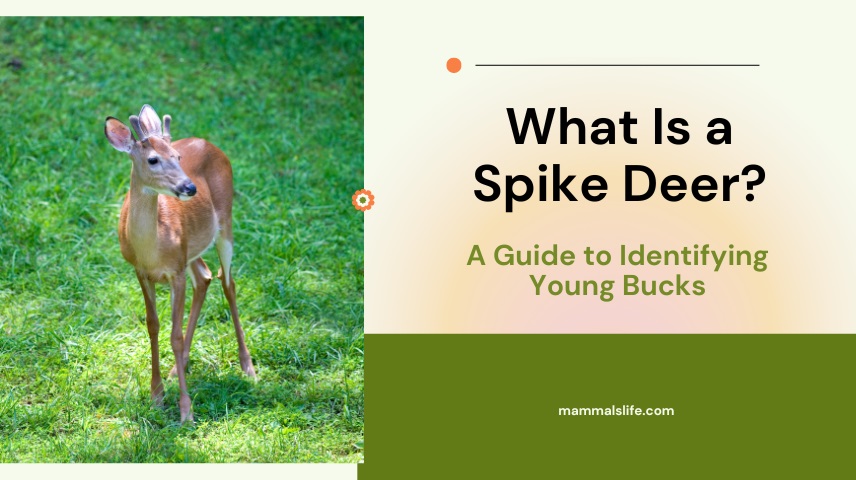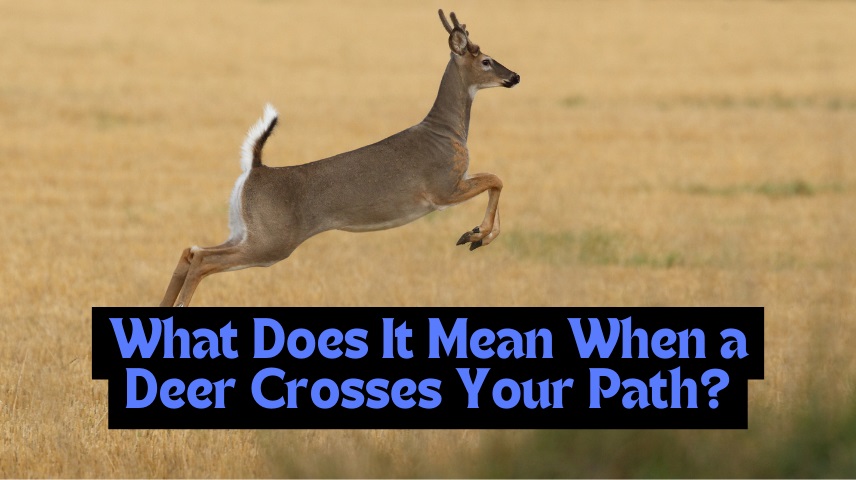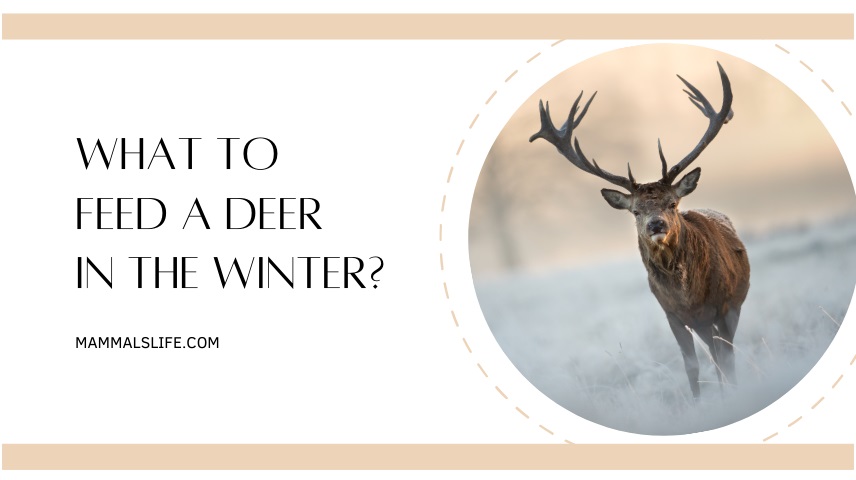Last Updated on February 22, 2025 by Mammals Life
A spike deer is a young buck with unbranched antlers. These antlers usually consist of single spikes on each side.
Spike deer are often the first stage in a buck’s antler growth. Hunters and wildlife enthusiasts can identify these young bucks by their distinct single-spike antlers. Recognizing spike deer is important for managing deer populations and hunting strategies. These young bucks are typically one to two years old and have not yet developed the branching antlers seen in mature bucks.
Understanding the characteristics of spike deer helps in making informed decisions about wildlife conservation and hunting practices. Identifying these young bucks contributes to maintaining a balanced and healthy deer population in various habitats.
Introduction To Spike Deer
Spike deer are a common sight in many forests. These young bucks are easily identifiable by their unique antlers. Understanding spike deer is crucial for wildlife enthusiasts and hunters alike. This guide will help you identify and appreciate these fascinating creatures.
Definition And Characteristics
A spike deer is a young buck with simple, unbranched antlers. These antlers usually consist of one single point on each side. The antlers are typically straight and short, resembling spikes, hence the name. Spike deer are usually younger than 2 years old.
| Characteristic | Description |
|---|---|
| Antlers | Single, unbranched spikes |
| Age | Less than 2 years |
| Size | Smaller than mature bucks |
Importance In Wildlife
Spike deer play a crucial role in the ecosystem. They are part of the natural cycle of growth and development in deer populations. Hunters often track spike deer to understand herd health. The presence of spike deer indicates a healthy, breeding population.
- Indicate a healthy deer population
- Help in monitoring herd health
- Crucial for maintaining ecosystem balance
Understanding spike deer helps maintain a balanced ecosystem. It ensures the survival and health of deer populations.
Read More – How Smart Are Deer? Understanding Their Behavior And Adaptability
Physical Features
Understanding the physical features of a spike deer can help you identify young bucks. These features include their antler development and body size and shape.
Antler Development
Spike deer have unique antler characteristics. Unlike mature bucks, their antlers are simple.
- Single spike on each side of the head.
- No branching or tines on the antlers.
- Shorter antlers compared to older bucks.
Body Size And Shape
Young bucks have distinct body features. These features set them apart from mature deer.
| Feature | Description |
|---|---|
| Body Size | Smaller and leaner. |
| Neck | Thin and less muscular. |
| Legs | Longer and more slender. |
Identifying a spike deer becomes easier with these physical features. Watch for their antler development and body size and shape.
Habitat And Distribution
Understanding the habitat and distribution of spike deer is crucial. These young bucks have specific environments where they thrive. Knowing where to find them helps in identifying and studying these fascinating creatures.
Preferred Environments
Spike deer prefer areas with abundant food and cover. Forests with dense underbrush are ideal. They often inhabit regions with mixed hardwoods and conifers. Open fields near forest edges also attract these young bucks. Water sources like rivers or ponds are important for their survival.
| Environment | Characteristics |
|---|---|
| Dense Forests | Provides cover and food. |
| Mixed Hardwoods and Conifers | Offers diverse nutrition. |
| Open Fields | Near forest edges for safety. |
| Water Sources | Essential for hydration. |
Geographic Range
Spike deer have a wide geographic range. They are found across North America. Their range extends from the southern United States to Canada. They adapt well to different climates and terrains. This adaptability makes them widespread.
Their presence is notable in states like Texas, Pennsylvania, and Wisconsin. They also thrive in Canadian provinces such as Ontario and Quebec. The wide range ensures they are a common sight for hunters and wildlife enthusiasts.
- Found in North America
- Range from the southern US to Canada
- Adapt to various climates
- Common in Texas, Pennsylvania, Wisconsin
- Thrive in Ontario, Quebec
Read More – Are Deer Nocturnal Or Diurnal? Exploring Their Activity Patterns
Behavioral Traits
Understanding the behavioral traits of spike deer helps in identifying these young bucks. By observing their social structure and feeding patterns, you can gain deeper insights into their habits.
Social Structure
Spike deer, or young bucks, often display unique social behaviors. They tend to form small bachelor groups, especially outside the mating season. These groups usually consist of other young bucks around the same age.
During the rut or mating season, spike deer may show solitary behavior. They separate from their groups to establish their territories. Older bucks might chase away these young bucks, forcing them into less desirable areas.
Spike deer communicate using a variety of vocalizations and body language. They use grunts, bleats, and even stomps to signal danger or establish dominance. Observing these behaviors can help identify their social rank and role within the group.
Feeding Patterns
Spike deer have specific feeding patterns. They are primarily herbivores, relying on a diet of various plants. Their diet includes grasses, leaves, and twigs. They also consume fruits and nuts when available.
These young bucks usually feed during the early morning and late evening. This behavior helps them avoid predators and human activity during the day. They use their keen sense of smell to locate food sources.
Spike deer may also exhibit browsing behavior, nibbling on different plants as they move. They often feed in open fields, forest edges, and near water sources. This diverse feeding habit helps them meet their nutritional needs.
| Feeding Time | Preferred Food | Feeding Location |
|---|---|---|
| Early Morning | Grasses, Leaves | Open Fields |
| Late Evening | Twigs, Fruits | Forest Edges |
| Night | Nuts | Near Water Sources |
Understanding the feeding patterns of spike deer can help in identifying their presence in the wild. Observing their diet and feeding times provides valuable insights into their daily routines.
Identification Tips
Identifying a spike deer can be tricky for beginners. Knowing the key differences helps. This guide will assist you in recognizing young bucks. Let’s explore the main identification tips.
Key Differences From Mature Bucks
Mature bucks have larger, more branched antlers. A spike deer’s antlers are simpler. Here are some key differences:
| Feature | Spike Deer | Mature Bucks |
|---|---|---|
| Antler Structure | Single, straight spikes | Branched, multiple points |
| Body Size | Smaller | Larger |
| Behavior | Less aggressive | More territorial |
Common Mistakes
Many hunters confuse spike deer with does. Here are some common mistakes:
- Thinking all small deer are doing.
- Ignoring the antler structure.
- Not considering behavior differences.
Understanding these key differences will help you identify spike deer correctly. Avoid these mistakes to become a better hunter.
Read More – Why Do Deer Run in Front of Cars? Tips for Drivers to Stay Safe
Conservation And Management
Understanding the importance of spike deer in conservation is crucial. Effective management ensures healthy deer populations and balanced ecosystems. Below, we explore the key aspects of conservation and management.
Population Control
Population control is vital for maintaining healthy deer numbers. Without it, deer populations can grow too large. This can lead to overgrazing and habitat destruction.
Wildlife agencies often use hunting regulations to manage deer numbers. They set specific hunting seasons and limits. This helps keep the population in check.
Sometimes, controlled hunts or culling are necessary. These are carefully planned to reduce numbers without harming the ecosystem.
| Method | Description |
|---|---|
| Hunting Regulations | Set seasons and limits to control population. |
| Controlled Hunts | Planned events to reduce deer numbers. |
| Culling | Selective removal of certain animals. |
Role In Ecosystem
Spike deer play an important role in the ecosystem. They help maintain the balance of plant and animal life.
Deer are herbivores. They eat plants and grasses. This helps control plant growth and supports other wildlife.
Spike deer are also prey for larger predators. This includes wolves and mountain lions. Their presence helps maintain predator populations.
Healthy deer populations contribute to biodiversity. This ensures a variety of species thrive in the ecosystem.
- Control plant growth
- Support predator populations
- Contribute to biodiversity
Frequently Asked Questions
What Does A Spike Mean In Deer Hunting?
A spike in deer hunting refers to a young male deer with unbranched antlers. These antlers usually have one point on each side.
Will A Spike Always Be A Spike Buck?
No, a spike will not always be a spike buck. Some spike bucks can grow larger antlers with age.
Will A Spike Always Be A Spike Buck?
No, a spike will not always be a spike buck. Spikes can develop into larger antlers in subsequent years.
What Causes A Deer To Be A Spike?
Poor nutrition, genetics, and environmental factors can cause a deer to have spike antlers. Young age also contributes.
What Is A Spike Deer?
A spike deer is a young buck with unbranched antlers.
Conclusion
Recognizing a spike deer is crucial for hunters and wildlife enthusiasts. These young bucks are characterized by their straight, unbranched antlers. Understanding their traits helps in proper wildlife management and conservation. Keep these identification tips in mind during your next outdoor adventure.











